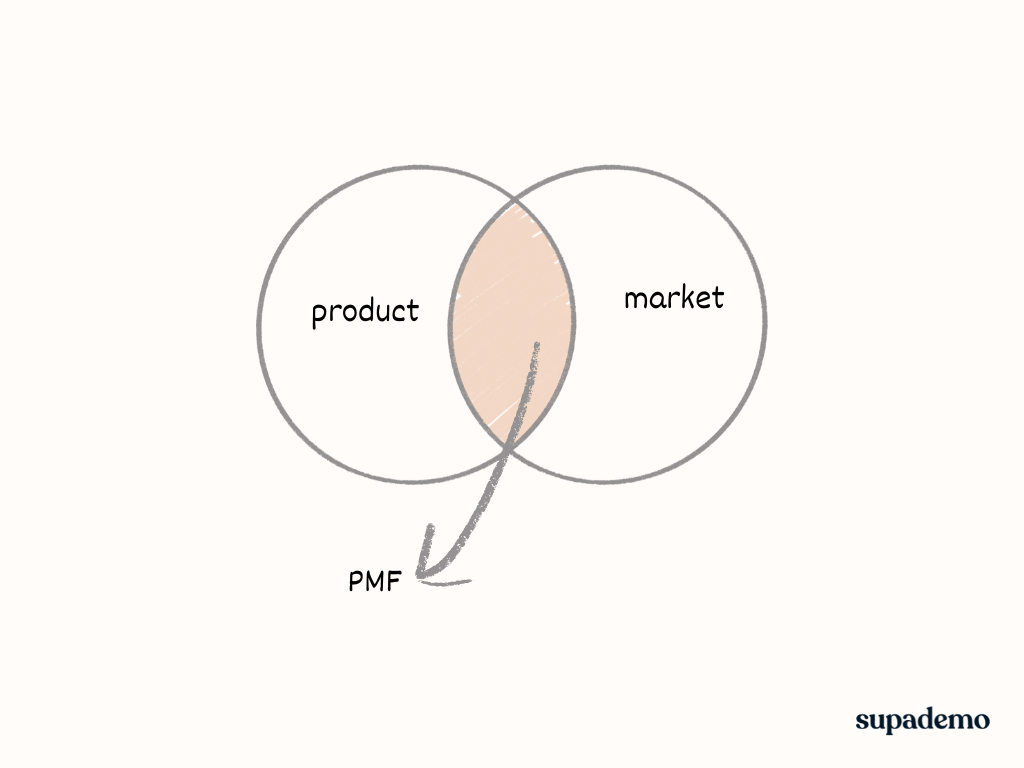Product-market fit stands as a pivotal milestone in the journey of a product or service toward success. It represents the ideal state where a product aligns seamlessly with the demands of a specific market segment, solving their problems or fulfilling their needs in a way that resonates deeply.
In this extensive blog post, we'll explore the essence of product-market fit, its significance, assessment methods, and strategies to achieve and sustain it.
Understanding Product-Market Fit
Product-market fit signifies the optimal alignment between what a product offers and what the market requires. It is the sweet spot where a product satisfies a genuine market need effectively, engendering customer satisfaction, retention, and demand. Achieving this alignment is fundamental for sustainable growth and market dominance.
Indicators and Significance
- Customer Satisfaction and Retention: A telltale sign of product-market fit is high customer satisfaction and retention rates. Satisfied customers tend to stick around and become advocates, contributing to organic growth.
- Market Demand and Growth Potential: Witnessing organic growth, high demand, and an increase in user adoption without aggressive marketing efforts signifies that the product resonates well within the market.
- Repeat Usage and Referral Rates: Products that compel users to return and recommend them to others often indicate a strong product-market fit, showcasing that the product's value proposition addresses a genuine need.
Assessing Product-Market Fit
- Qualitative Feedback: Gather insights through surveys, interviews, and direct feedback from users. Assess their experiences, pain points, and how the product fulfills their needs.
- Quantitative Metrics: Analyze metrics like active users, retention rates, churn rates, and Net Promoter Score (NPS) to quantify user engagement and satisfaction levels.
- Market Adoption and Growth Rates: Monitor market adoption trends, growth rates, and customer acquisition costs. A sustainable product-market fit often leads to efficient customer acquisition and growth.
Strategies to Attain Product-Market Fit
- Thorough Market Research: Start by deeply understanding the target market, their pain points, and unmet needs. Adapt the product to fit these identified requirements.
- Iterative Product Development: Adopt an iterative approach, incorporating user feedback and making incremental improvements to the product based on real-time insights.
- Focus on Early Adopters: Engage with early adopters who align closely with the target audience. Leverage their feedback to refine the product before scaling to a broader market.
- Clear Value Proposition: Clearly articulate the product's unique value proposition that addresses specific pain points, resonating with the target audience.
Importance of Sustaining Product-Market Fit
- Adaptation to Market Changes: Markets evolve, and customer needs change. Continuously gather feedback and adapt the product to maintain its relevance.
- Competitive Edge: Products that consistently meet market needs maintain a competitive edge. It's crucial to keep refining and innovating to stay ahead.
- Customer Loyalty and Advocacy: Sustained product-market fit nurtures customer loyalty and advocacy, as satisfied users become loyal customers and vocal advocates.
Conclusion
Product-market fit serves as the cornerstone of successful product development and market penetration. Achieving this fit requires a deep understanding of the market, iterative development, and a relentless focus on meeting customer needs. Continuous assessment and adaptation are crucial for not only achieving but also sustaining product-market fit in an ever-evolving market landscape.
In essence, it's not just about having a great product; it's about ensuring that the product solves a real problem for a significant number of customers.













.webp)








